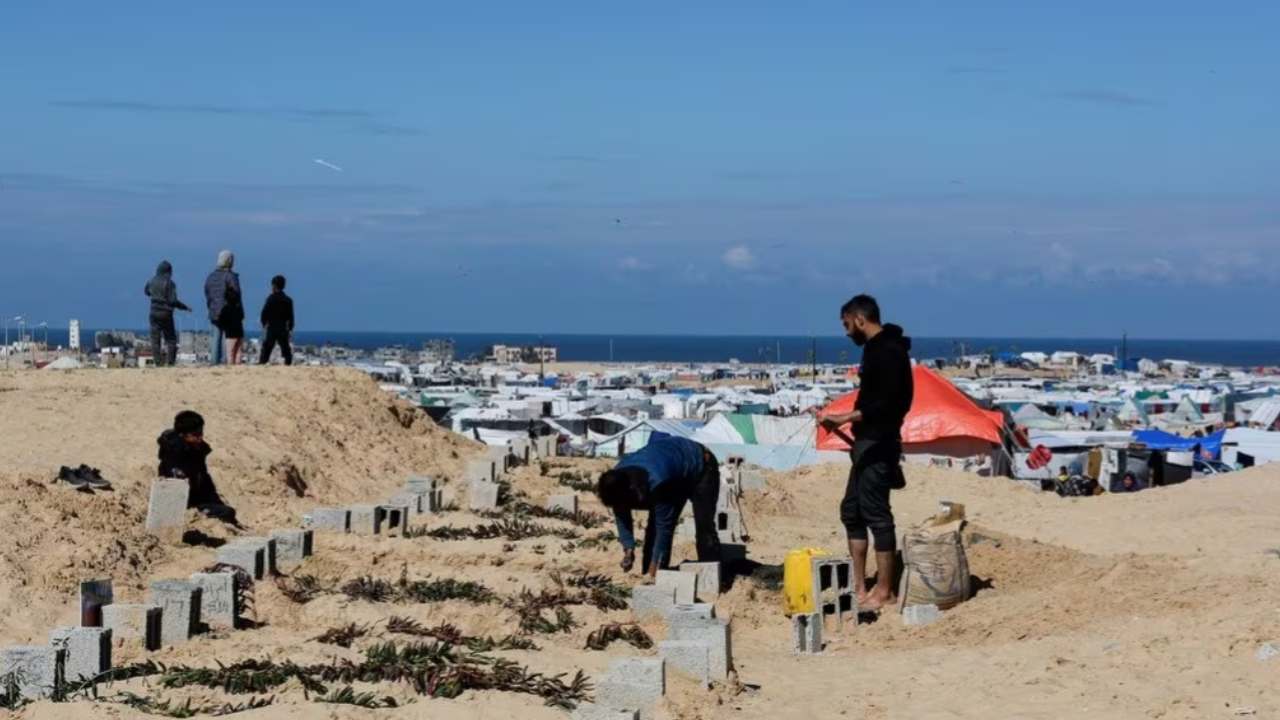Hamas is designated as a terrorist organization by several countries, including the United States, Israel, and the European Union. In a statement Hamas said it responded “in a positive spirit, ensuring a comprehensive and complete ceasefire, ending the aggression against our people, ensuring relief, shelter, and reconstruction, lifting the siege on the Gaza Strip, and achieving a prisoner swap.”
Senior Hamas official Ghazi Hamad conveyed to Reuters via text message that Hamas is striving for the release of the maximum number of Palestinian prisoners in Israel.
The Israeli prime minister’s office responded late on Tuesday, stating that the specifics of Hamas’ response are currently under thorough evaluation by the involved officials in the negotiations. U.S. Secretary of State Antony Blinken, amidst a rapid tour of the Middle East, announced his intention to discuss the Hamas response with Israeli officials during his visit to the country on Wednesday.
U.S. President Joe Biden, acknowledging “some movement” on a deal, criticized Hamas’ response as “a little over the top” without elaborating.
He stated, “We’re not sure where it is. There’s continuing negotiations right now,” in Washington. In Doha, Blinken mentioned, “There’s still a lot of work to be done, but we continue to believe that an agreement is possible, and indeed essential.” He made these remarks at a news conference with Qatari Prime Minister and Foreign Minister Sheikh Mohammed bin Abdulrahman Al Thani following Hamas’ response.
Sheikh Mohammed characterized the Hamas response as “positive” overall but refrained from divulging specifics. A Hamas official, speaking anonymously to Reuters on Tuesday, reiterated that the Palestinian Islamist movement would not consent to any hostage releases without assurances that the conflict would cease and Israeli forces would withdraw from Gaza.
The proposed agreement, crafted over a week ago by U.S. and Israeli intelligence officials in talks with representatives from Egypt and Qatar, aims to secure the release of remaining hostages held by Gaza militants in exchange for a prolonged cessation of hostilities.

Sources close to the talks have indicated that the proposed truce would span a minimum of 40 days, during which militants would release civilians among the remaining hostages in their custody. Subsequent phases would entail the transfer of soldiers and the return of deceased hostages, in exchange for the release of Palestinians detained in Israel.
Hostages
Prime Minister Benjamin Netanyahu asserts Israel’s commitment to continue fighting until Hamas is eradicated. However, there’s a growing movement within Israel advocating for more concerted efforts to secure the release of hostages, even if it entails negotiating with Hamas.
The Israel Democracy Institute’s nonpartisan poll revealed that 51% of respondents prioritize the recovery of hostages as the primary objective of the war, while 36% advocate for toppling Hamas.
Israel’s chief military spokesperson Rear Admiral Daniel Hagari announced on Tuesday that 31 of the remaining hostages held in Gaza have been confirmed dead. Israel previously stated that 136 hostages were still being held in Gaza after 110 were released under the only truce agreed upon so far, in November, when Israel also released 240 Palestinians it was holding.
Citing an Israeli assessment shared with U.S. and Egyptian officials, the Wall Street Journal reported that as many as 50 hostages could be dead, indicating that approximately 80 hostages held by Hamas are still alive.
Israel initiated its military offensive in Gaza following an attack by militants from Hamas-ruled Gaza, resulting in 1,200 casualties and 253 hostages in southern Israel on Oct. 7.
Gaza’s Health Ministry reports at least 27,585 confirmed Palestinian casualties in Israel’s military campaign, with fears of thousands more trapped under debris.
Israel continues its offensive, advancing into areas of the Gaza Strip, currently sheltering hundreds of thousands displaced from previous conflicts, claiming the elimination of dozens of Palestinian gunmen in the past 24 hours.
Palestinians anticipate Blinken’s diplomatic efforts to secure a ceasefire before Israeli forces move into the southern town of Rafah, where over half of Gaza’s 2.3 million inhabitants seek refuge, primarily in public structures and makeshift tents near the Egyptian border.
Relentless Pressure
Israeli forces maintained pressure on Khan Younis, the primary southern city they’ve sought to capture for weeks. Aerial and tank bombardment persisted overnight, resulting in at least 14 casualties from airstrikes since the early hours, as reported by Palestinian residents and medics.
Rafah, located just south of Khan Younis, also experienced airstrikes and tank shelling. Gaza health officials confirmed two fatalities from a strike on a house in Rafah, while six policemen died in a car hit by gunfire.
Israeli leaders assert Rafah is now a stronghold of Hamas combat units and pledged to advance into the town, alarming international aid agencies who warn of imminent danger to a million displaced civilians, pressed against the border fence.
Mahmoud Amer and his family sought refuge in a cemetery in Rafah, hoping for safety among the deceased, including recent war victims. Amer expressed the dire conditions, stating, “It’s better than living in residential areas where the houses could collapse on our heads… The dead are in comfort, while we, the living, are in pain.”






